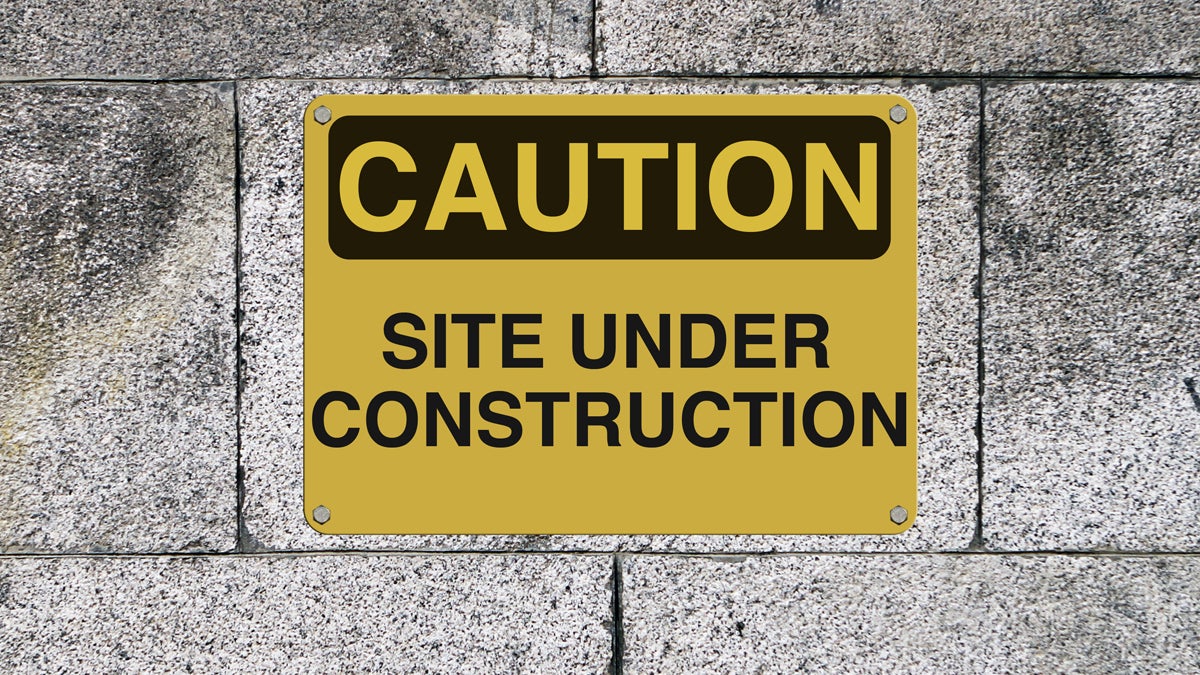Congressional reform should start with some basic tech project management
 Construction sign courtesy of Shutterstock.com) " title="shutterstock_construction_1200x675" width="1" height="1"/>
Construction sign courtesy of Shutterstock.com) " title="shutterstock_construction_1200x675" width="1" height="1"/>
(Construction sign courtesy of Shutterstock.com)
September’s federal government shutdown sparked calls for Congressional reform from both sides of the aisle. Congress could indeed use some reform — not for the political needs of Democrats and Republicans, but rather for the practical needs of effective governance and project management.
At best, all of the political arguments are cyclical — and at worst, they are the result of partisan frustration. Democrats want to return power from the Speaker of the House to committee chairs. Yet, in the late 1970s, it was Democrats who stripped committee chairs of their power to control legislation and returned it to the Speaker. I say “returned” because, in the early 20th century, Democrats had previously stripped the Speaker, Republican Joseph Cannon, of his power to assign committee chairs and removed him from the rules committee. Presently Democrats in the Senate would like to eliminate the filibuster. Yet when Democrats were in the minority in the Senate, it was the Republican majority that argued to abolish the filibuster.
However, reform is necessary. The 9/11 Commission observed that the congressional committee structure did not reflect the national security needs of the 21st century. This point can be expanded beyond national security needs. Specifically, the congressional committee system must meet the technology demands of 21st-century governance.
There is no doubt that the roll-out of the Affordable Care Act website was a disaster. Requirements were not analyzed properly, data privacy was not fully explored, and agencies did not coordinate properly. These problems represent not “glitches” but rather a systemic failure. Criticism of technological problems with the roll-out is not based on politics. It is simply an issue of good government.
Unfortunately, there is little reason to think that future technology requirements will turn out any differently. Immigration reform provides an example. The immigration reform bill requires mandatory use of an expanded E-Verify system by all employers. E-Verify, a system currently used by only 1 percent of employers, checks the status of immigrant workers. The expansion includes use of fraud-proof documents and a photo-matching tool and integration with mandatory entry/exit points for foreigners. All of these requirements are complicated and have multiple points of failure. Will the applications work? Will the various sub-systems be able to communicate? Will the entire system be able to handle the volume?
The underlying issue for the Obamacare website, the immigration E-Verify system, and future technology requirements is how to provide proper oversight of complex projects as the demand increases. The answer may be for each house of Congress to have a committee on technology project oversight. Legislation authorizing technology projects over a certain size would require approval by this committee in each house in a process similar to funding bills passing through the Appropriations committees and tax legislation passing through the House Ways and Means or Senate Finance Committees. These technology committees would be able to examine requirements, hear from outside experts, discuss project timelines, and monitor progress. The committees would essentially have functions similar to project management offices in large companies.
The structure of these committees could be modeled after the House and Senate Appropriations Committees, which represent nearly every aspect of government through their 12 sub-committees covering areas from defense to transportation to agriculture and providing oversight of a cluster of executive agencies and departments.
Critics might argue that these functions belong in the executive branch. The issue here is that the executive branch officials are trying to get to “yes,” especially if the project is a presidential initiative. Others may argue that the process would be slowed down. This is correct, but taking the time to ask and answer the right questions is worth it when the potential for wasted dollars is so great. Obviously, these committees would exercise oversight over large projects; no one wants a separate committee to approve a laptop purchase in the Interior department.
Ultimately, our government will be required to manage larger and larger technology projects to meet the demands of citizens. Yet, we also need to have proper checks and balances to assure that the solutions are workable and cost-effective. This role of balancing the executive branch belongs to Congress, as Madison intended, even if it is for initiatives he could have hardly imagined.
WHYY is your source for fact-based, in-depth journalism and information. As a nonprofit organization, we rely on financial support from readers like you. Please give today.

